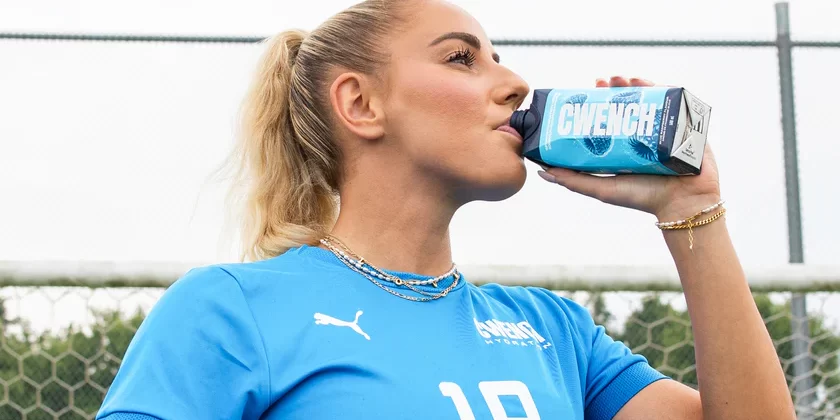- Swing and a miss for torpedo bat trademark application? - April 23, 2025
- Copyright lawsuit could create new licensing option for media industry - January 29, 2025
- Trademark law is not intended to stifle competition - November 14, 2024
By Tony Poland, LegalMatters Staff • The line between legitimate competition and trademark infringement can be a fine one, says Toronto intellectual property lawyer John Simpson.
Simpson, principal of IP boutique Shift Law Professional Corporation points to the recent case of Biosteel Inc. v. Cizzle Brands Ltd. as an example.
BioSteel, which had marketed a well-known brand of sports hydration drinks and powder mixes, filed for creditor protection in September 2023. A short time later another company paid $10 million to purchase certain BioSteel assets that included its intellectual property rights.
The court heard that after being outbid for the BioSteel rights, one of BioSteel’s founders and other former executives launched Cizzle Brands in May 2024, producing Cwench, a line of sports hydration drinks.
‘An obvious rip-off of BioSteel’
The new BioSteel owners took issue with the products, alleging Cwench was operating “their brand … in a manner that passes off on the goodwill of the Plaintiffs’ brand and product” and calling Cwench “an obvious rip-off of BioSteel.”
The plaintiff argued that Cwench’s “products and flavours are the same as BioSteel’s and that the ‘get-ups,’ meaning the packaging and overall look, of its products are virtually identical to those of BioSteel.”
Simpson, who was not involved in the case but comments generally, says “BioSteel was trying to make the case that the competing product is so similar to the original BioSteel product that it is confusing consumers and therefore infringing on residual trademark rights in the product.” “But trademark law is not intended to prevent competitors from selling similar products, even products that are marketed in very similar ways,” he tells LegalMattersCanada.ca. “Trademark law protects rights in distinctive names, logos or other signs that identify the trade source of a product but not any rights in the products themselves or in the business model through which they are marketed and sold.
“As a trademark lawyer, this case surprised me,” Simpson adds. “It didn’t have a chance the way I see it. There is a definite line between trademark infringement or passing off and just selling a competing product. To succeed in a passing-off case, the plaintiff needs to establish that the defendant has somehow misrepresented who the source of the product or service is. That is very different from just selling a similar product.”
He says the motivation for the lawsuit “seems obvious.”
Paid a lot of money for company assets
“The new owners paid a lot of money for the BioSteel assets. They were going to be just like BioSteel,” Simpson says. “And along comes this other business that is similar in what they sell and how they do it and that’s being operated by the same people who operated the business that the new owners bought.”
Justice Ira G. Parghi found that the new owners’ case against Cwench did not even raise a serious issue, he says.
- Time is not on the side of copyright infringers, SCOTUS rules
- Trademarks Act not meant to protect Canadian sensibilities
- U.S. lawmakers tee up copyright protection for golf courses
“I acknowledge the duplication or near-duplication in flavour names, but I am not persuaded that it constitutes misrepresentation. The evidence indicates that there is considerable consistency across the wellness drink industry in terms of flavour offerings,” Parghi writes. “Similarly, the Plaintiffs point to Cwench’s use of Tetra Pak cartons as evidence of its misrepresentation. It is uncontested, that until Cwench entered the market, BioSteel was the only sports hydration drink sold in Tetra Pak cartons. Competitors sold their drinks in plastic bottles.
“Now, however, Cwench uses Tetra Pak cartons also. In my view, the record supports that Cwench’s use of Tetra Pak is a functional and utilitarian choice, not an effort to mimic BioSteel’s packaging.”
Distinctive trade source indicator
What is missing in this case, Simpson says, “and it is crucial, is one single thing about this product that could be considered a distinctive trade source indicator.”
“An example that the judge gives is a Toblerone chocolate bar,” he says. “It is a triangular bar. Just about anyone who sees it would instantly recognize it as a Toblerone. And they are going to buy it even if they don’t see the name on the package because they recognize it as Toblerone. If someone came along with a similar triangular chocolate bar, that would be trademark infringement.”
Simpson says while there are similarities in the products offered by BioSteel and Cwench, those similarities “are all too common.”
“The plaintiffs are pointing to things, like flavours, that are common in the sports drink industry,” he says. “The packaging was also cited. Yes, they use the same Tetra pack BioSteel uses but it can easily be argued they did it because it is a great way to package a product.”
In the end, Simpson says that the plaintiff was unable to point to one distinctive trade source indicator that Cwench used in violation of trademark law.
“Basically, the defendant is offering a similar product,” he says. “They have a similar business, they have similar flavours, they have a similar way of selling. They have all these things that may replicate BioSteel’s business model but you can’t sue someone for that. That is just competing.”

